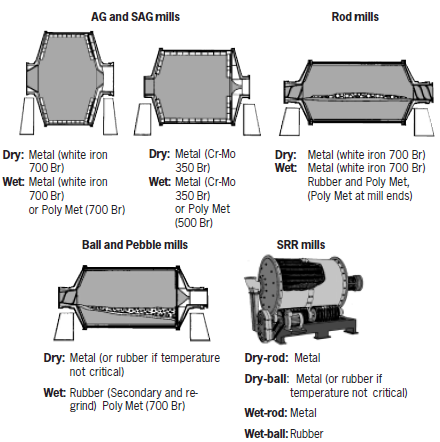In a mineral processing plant,the activities unavoidably result in wear. And wear costs money. Often lots of money. This is related to the structure of rock, ore or minerals, being crystals normally both hard and abrasive. The wear is especially much more in hard ore such as iron ore processing and gold ore processing plant.
Why wear at all?
Wear is caused by the normal rock stress forces
• Compression (1)
• Impaction (2)
• Shearing (3)
• Attrition (4)
in combination with mineral hardness and energy!
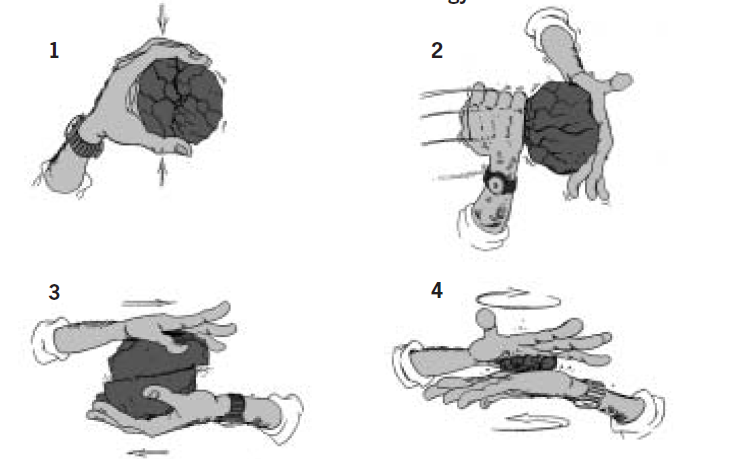
Wear in operation caused by
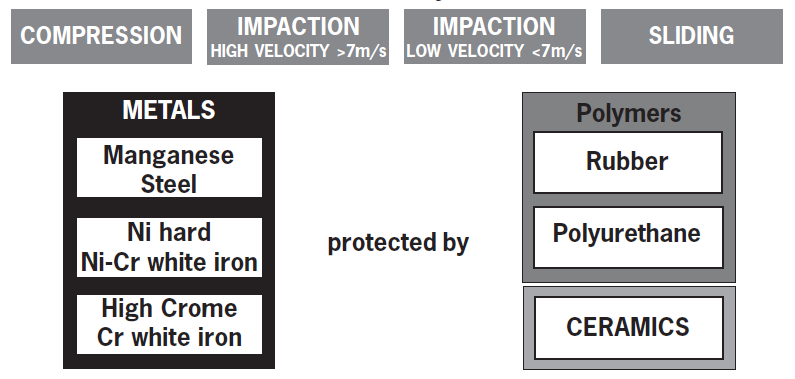
1.Wear by Compression
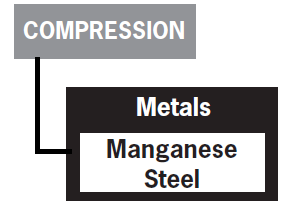
Metals and compression
Manganese steel: The first option for compression wear is manganese steel. This alloy has a very special property, being self hardening and self healing when exposed to large amounts of compression and impact energy.
Normal standard is a 14% Mn alloy which is first option in most crushing applications. 18 % Mn alloy is a harder but also a more brittle alloy used in applications where the rock is softer (limited self hardening) but very abrasive.
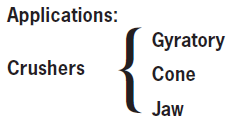
Restrictions:
When installed in applications without work hardening service life will be poor! The alloys of cast ”white iron” type (High-chrome and Ni- hard) shall be avoided in crushers submitted to heavy compression.
2.Wear by Impaction (high)
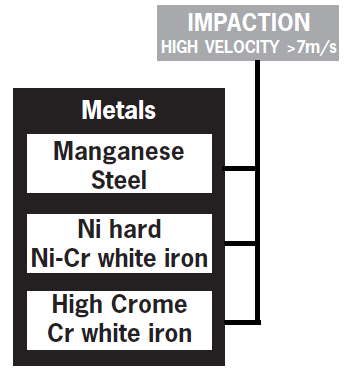
Metals and impaction
The metals can be classified as:
Manganese: Needs high impaction for self hardening. If impaction is getting lower and
sliding is increasing Manganese is not suitable.
High Chrome: Opposite to manganese, can take heavy sliding but is more fragile and therefore limited against impaction.
Ni-hard: Somewhere between the two materials above.
Cr-Mo: Used in grinding when High Crome is too brittle
Note! The use of chrome steel (less brittle than chrome iron) is increasing for liners, curtains and hammers.
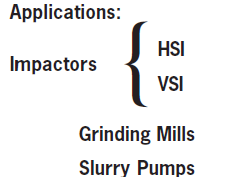
3.Wear by Impaction (low)
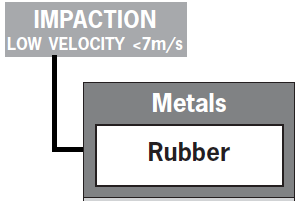
Rubber and impaction
For low velocity impaction (material speed less than 7 m/s) SBR, styrene butadiene
rubber (60 ShA) is always the first choice and will give the best cost effectiveness.
The material is also very tolerant to material size and is excellent for use in grinding mills, dump trucks and primary hoppers.
Applications: Dump Trucks, Feeder hoppers, Transfer points, Grinding Mills, Slurry pumps
4.Wear by Sliding
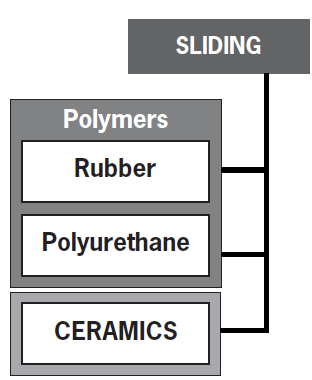
Rubber and sliding
Natural rubber is an outstanding option for the sliding abrasion of small, hard and sharp particles. Also for wet conditions.
Restrictions:
If sliding speed is exceeding 7 m/s (dry applications) temperature can start to rise and cause damage. Besides temperature oil is always a threat.
Polyurethane and sliding
Best option for tough sliding applications when particle size is lower than 50 mm. Excellent in wet applications. Tolerant to chemicals and oil.
Restrictions:
Large sizes and high velocity might cause problems.
Ceramics and sliding
The natural choice when mission is too hard for the options above. Hardness, resistance to temperature and corrosion plus low weight gives a masterpiece for sliding. Al203 (Aluminium oxide) is the most cost-effective material.
Restrictions:
Impaction is dangerous for ceramics (cracking) and must be avoided. Combination ceramics + rubber is an option. Composition and quality can vary from supplier to supplier.
Wear Protection – Wear Products
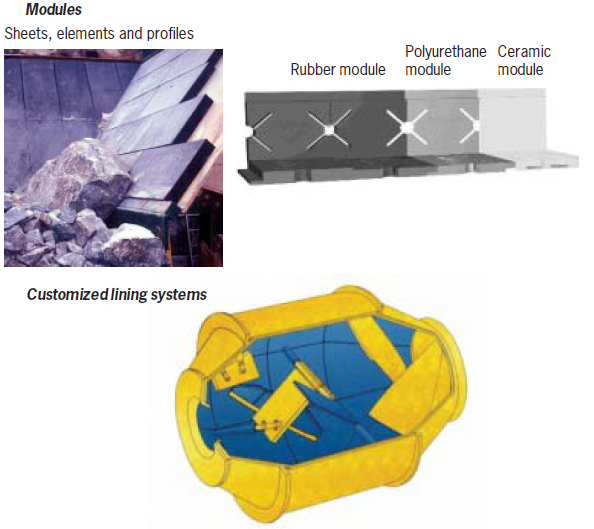
Wear products – applications
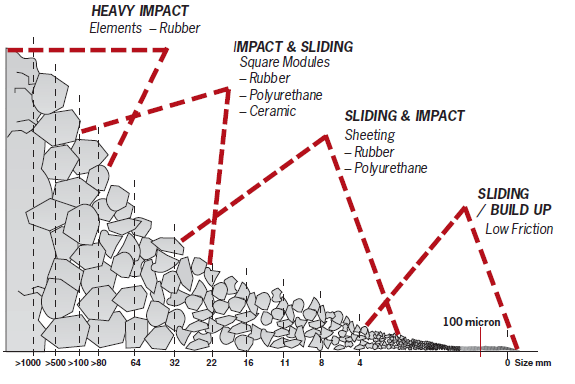
Heavy Impact – Selection
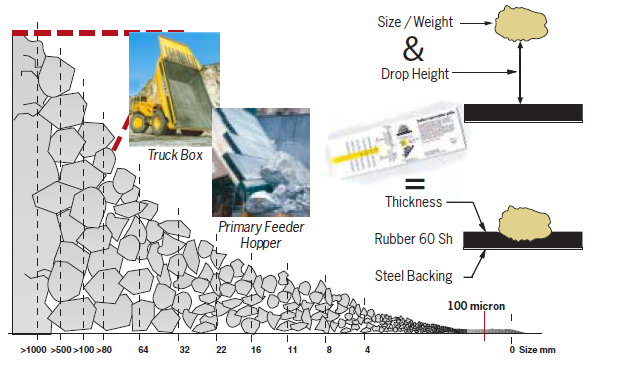
Impact and Sliding – Selection (modules)
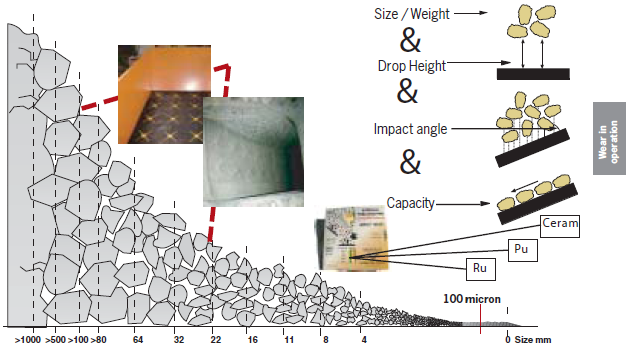
Impact and sliding – Selection (sheeting)
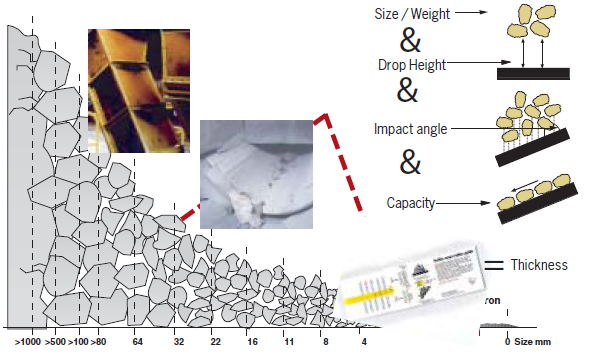
Sliding and build up – selection
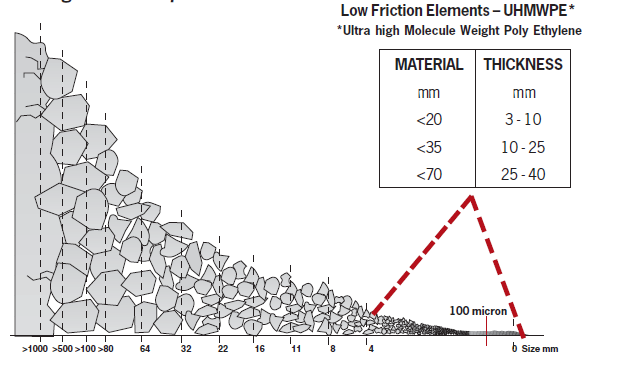
Wear Protection – Wear Parts
Wear parts –Vibrating Screen
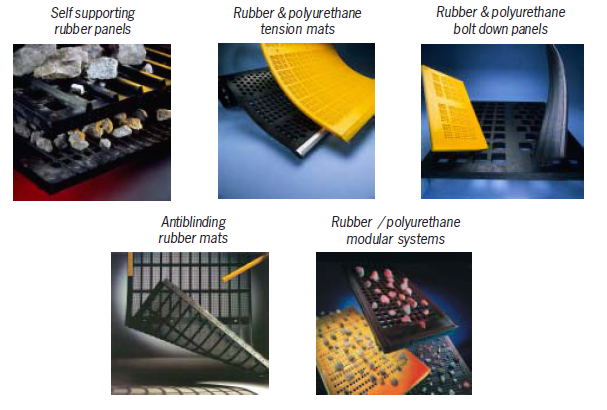
Wear parts – ball mills
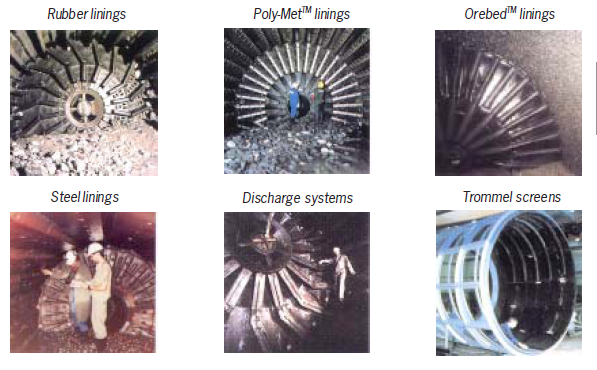
Tumbling mill – lining components
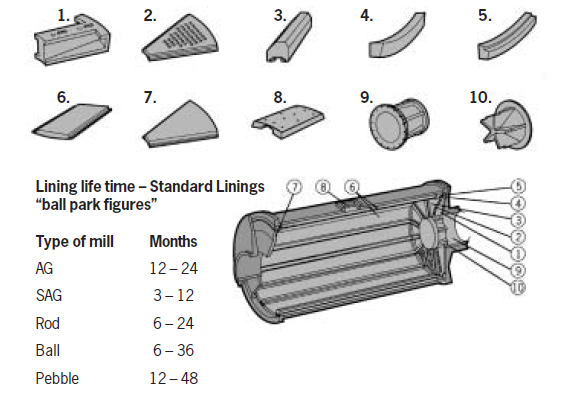
Lifter bars – rubber and compound
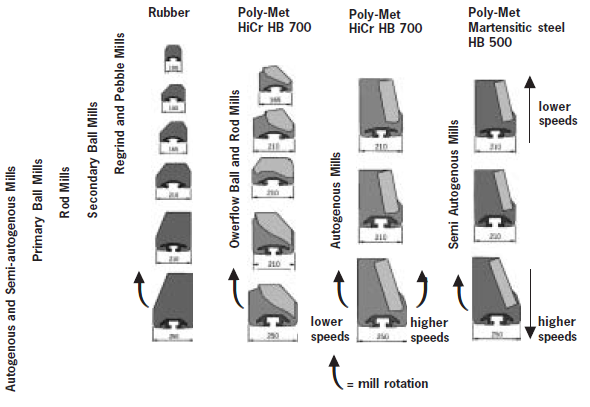
Tumbling mill liners– material
